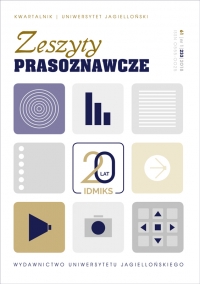ACCESS OF THE AUDIENCE TO THE DISCURSIVE ORDER GENERATING PUBLIC OPINION IN THE LIGHT OF PROGRAMMING STRATEGIES AND PRACTICES OF TVP S.A.
ACCESS OF THE AUDIENCE TO THE DISCURSIVE ORDER GENERATING PUBLIC OPINION IN THE LIGHT OF PROGRAMMING STRATEGIES AND PRACTICES OF TVP S.A.
Author(s): Weronika Świerczyńska-GłowniaSubject(s): Media studies, Evaluation research
Published by: Wydawnictwo Uniwersytetu Jagiellońskiego
Keywords: Public sphere and public media; Public opinion;
Summary/Abstract: As John Downey points out, the public sphere is partially created by mass media institutions and relations. The special significance of the latter in the creation and functioning of the public sphere is pointed out by Jürgen Habermas. When analysing the public sphere power structure, the author distinguishes four types of power: political, social, economic and media power. According to Habermas, the media power is based on a mass communication technology. Those who work in politically relevant media sectors (i.e. reporters, journalists, editors, directors, producers and publishers) cannot avoid exercising an influence because they choose and process important political content, and thus intervene in the formation of public opinions.
Journal: Zeszyty Prasoznawcze
- Issue Year: 2018
- Issue No: 1 (233)
- Page Range: 66-80
- Page Count: 15
- Language: English

